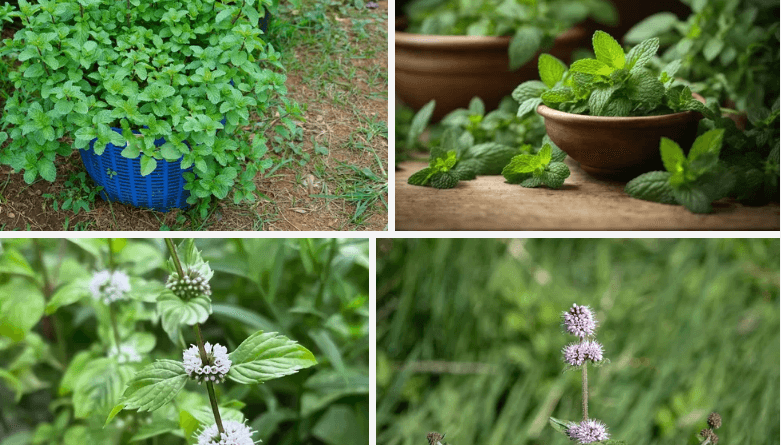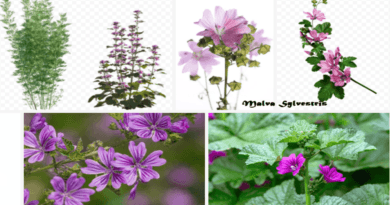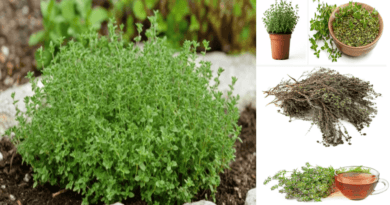Mentha Aquatica: The Versatile Water Mint
Mentha aquatica, commonly known as water mint, thrives in damp environments, offering both aesthetic beauty and medicinal benefits. This perennial herb belongs to the mint family, Lamiaceae, and grows naturally in wetlands, riverbanks, and marshy areas across Europe, Africa, and western Asia. Its ability to adapt to diverse aquatic habitats makes it a resilient and valuable plant in both natural ecosystems and cultivated gardens.
Botanical Characteristics of Mentha Aquatica
Water mint features oval-shaped, serrated leaves with a vibrant green hue and occasional purple tints. These leaves not only add visual charm but also release a refreshing aroma when crushed. The stems often display a reddish-purple color, creating a striking contrast against the green foliage. During the summer months, clusters of lilac to purple flowers bloom, forming dense, spherical inflorescences. These blossoms attract pollinators like bees and butterflies, enhancing biodiversity and supporting pollination.
The plant can grow up to 90 centimeters tall and spreads rapidly under favorable conditions. Its sturdy root system helps anchor soil in wetland areas, effectively reducing soil erosion. As a result, water mint contributes to maintaining ecological balance in aquatic ecosystems. Its dense foliage also provides shelter for small aquatic organisms, creating microhabitats within wetland ecosystems.
Traditional and Modern Uses of Mentha Aquatica
For centuries, water mint has played an essential role in traditional medicine. Healers and herbalists relied on its therapeutic properties to treat various ailments, including digestive problems, nausea, and headaches. The aromatic leaves were often chewed to combat bad breath, while crushed leaves were applied to soothe skin irritations and insect bites.
In contemporary herbal medicine, water mint remains highly valued for its essential oils. These oils contain menthol, which provides cooling, anti-inflammatory, and antimicrobial properties. As a result, they are frequently used in balms, ointments, and aromatherapy blends. Water mint essential oil is also included in products designed to ease muscle pain, reduce stress, and improve respiratory health.
Culinary Applications of Water Mint
Water mint’s distinctive flavor and aroma make it a cherished ingredient in culinary arts. Its leaves are commonly infused into teas, adding a refreshing taste and subtle earthy undertones. Chefs often incorporate fresh water mint leaves into salads, enhancing their flavor with a natural minty zest. The herb also serves as an attractive garnish for desserts, cocktails, and savory dishes.
In addition, water mint complements fruit salads, yogurt-based dips, and chilled summer beverages. Its versatility allows it to blend well with other herbs such as basil, parsley, and coriander. When cooking with water mint, fresh leaves deliver the best results in terms of taste and fragrance. However, dried leaves can also be included in herbal blends, infusions, and seasoning mixes.
Mentha Aquatica as Tea and Drink

Water mint tea has gained popularity for its soothing and invigorating qualities. Brewing fresh or dried water mint leaves creates an aromatic tea with a gentle mint flavor and mild earthy undertones. This caffeine-free infusion serves as an excellent choice for relaxation after a long day.
Drinking water mint tea offers several health benefits. It aids digestion, reduces bloating, and helps alleviate nausea. Its natural calming properties also make it effective in reducing stress and promoting restful sleep. On hot summer days, chilled water mint tea provides a refreshing and hydrating beverage option.

For added variety, water mint pairs well with lemon, honey, ginger, or chamomile. These ingredients enhance the tea’s flavor profile while amplifying its natural therapeutic effects. Whether enjoyed hot or cold, water mint tea remains a delightful and healthful drink.
Growing and Caring for Mentha Aquatica
Cultivating water mint requires minimal effort, making it a favorite among gardeners. This herb thrives in moist, nutrient-rich soil and flourishes in full sunlight or partial shade. While it grows naturally in wetland environments, gardeners often plant it in containers to prevent its rapid spread.
Regular pruning ensures healthy growth and prevents overcrowding. Gardeners can propagate water mint through stem cuttings or root division, both of which yield successful results. With proper care, water mint grows vigorously, producing abundant leaves and flowers throughout the growing season.
When grown near ponds, streams, or water features, water mint enhances the aesthetic appeal of outdoor spaces. Its lush foliage and vibrant flowers add visual interest while supporting local biodiversity.
Environmental Benefits of Water Mint

Beyond its medicinal and culinary uses, water mint contributes significantly to environmental conservation. The plant acts as a natural water purifier, filtering pollutants and improving water quality in wetland ecosystems. Its roots stabilize soil, reducing erosion and preventing sediment from clouding waterways.
Water mint also supports aquatic biodiversity. Its dense foliage creates shelter for small fish, insects, and amphibians, contributing to healthy aquatic habitats. Conservationists frequently use water mint in wetland restoration projects due to its resilience and environmental benefits.
By planting water mint, individuals and organizations can actively contribute to preserving fragile ecosystems while enjoying the plant’s many practical uses.
Potential Side Effects and Precautions
Despite its numerous benefits, water mint should be consumed in moderation. Excessive intake may cause digestive issues, including stomach cramps or discomfort. Individuals with known allergies to mint plants should exercise caution when using water mint.
Pregnant and breastfeeding women should consult healthcare professionals before using water mint medicinally. Additionally, essential oils derived from water mint should always be diluted before topical application to avoid skin irritation.
Mentha aquatica, or water mint, remains an extraordinary herb with a multitude of uses. From traditional remedies to modern wellness products, its versatility shines in medicine, cuisine, and environmental conservation. Whether sipped as tea, grown in gardens, or used in natural remedies, water mint continues to enrich lives in countless ways. By embracing this herb, individuals can enjoy its benefits while contributing to a healthier planet.
References
- Bown, D. (1995). Encyclopedia of Herbs and Their Uses. Dorling Kindersley.
- Grieve, M. (1931). A Modern Herbal. Penguin.
- USDA Natural Resources Conservation Service. (2020). Mentha aquatica Fact Sheet.




